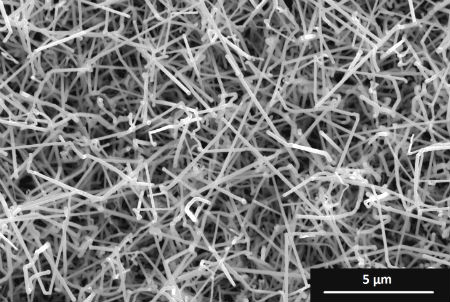|
NOVIDADES
The semiconductor material germanium was also supposed to fundamentally change its properties and behave like a metal when a sufficient amount of tin was mixed in - that was already known; however, in practice, that was previously not attained.  Nanostructures made of previously impossible material. Credit: TU Wien
Sven Barth's team have therefore developed a new approach that links particularly rapid crystal growth to very low process temperatures. In the process, the correct quantity of the foreign atoms is continuously incorporated as the crystal grows. The crystals grow in the form of nano-scale threads or rods, and specifically at considerably lower temperatures than before, in the range of just 140-230°C. "As a result, the incorporated atoms are less mobile, the diffusion processes are slow, and most atoms stay where you want them to be," explains Barth. Using this method, it has been possible to incorporate up to 28% tin and 3.5% gallium into germanium. This is considerably more than was previously possible by means of the conventional thermodynamic combination of these materials - by a factor of 30 to 50. Vienna University of Technology. Posted: Mar 09, 2018. |
|||||||||||||||||||||||||